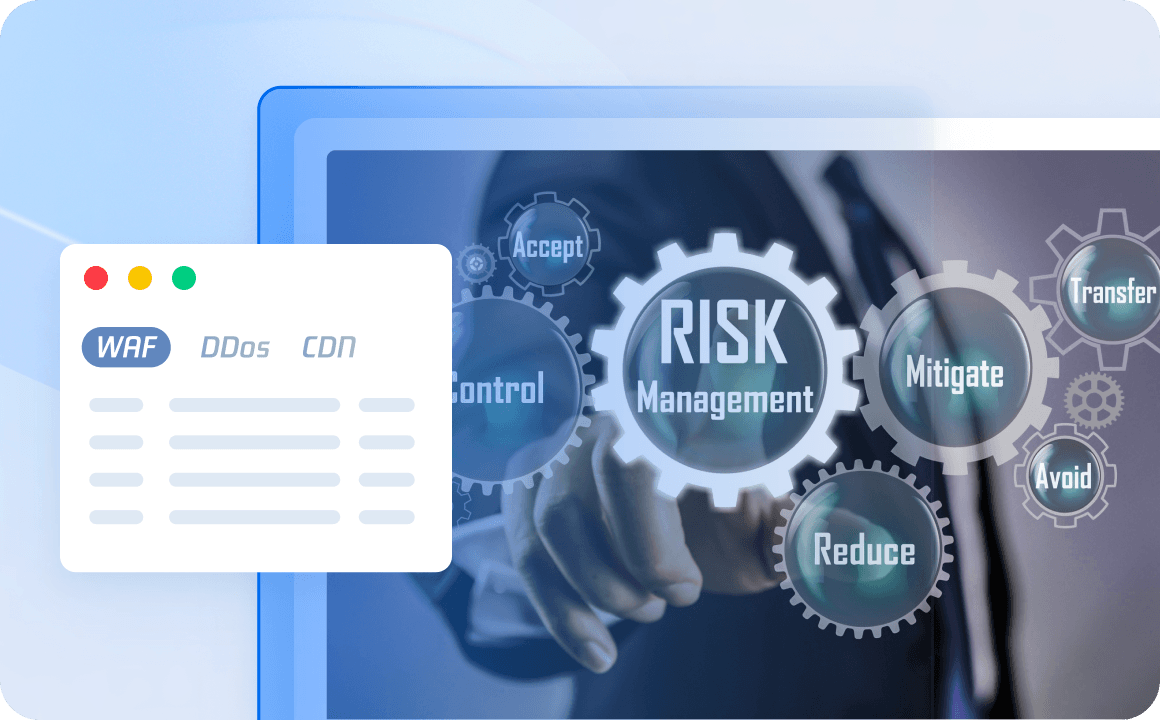Web Application Security Requirements: A Developer's Guide for 2025
As a developer in 2025, you're building increasingly complex web applications that process sensitive data and face growing security threats. While you might not be a security specialist, understanding and implementing web application security has become an essential part of your job, not just a specialist concern.
This guide outlines practical security requirements that every developer should understand and implement, using straightforward approaches that integrate into your existing development workflow. Whether you're working on a small project or part of a larger team, these requirements will help protect your applications from common attacks.

Authentication and User Management
Building Secure Authentication Systems
Authentication is often your application's first line of defense:
- Implement multi-factor authentication (MFA): Most frameworks offer simple MFA integrations. Even adding a simple email verification code as a second factor significantly improves security.
- Use secure password handling: Never store plaintext passwords. Instead, use your framework's built-in password hashing functionality:
// Node.js example using bcrypt
const bcrypt = require('bcrypt');
const saltRounds = 10;
// Hashing a password
const hashedPassword = await bcrypt.hash(password, saltRounds);
// Verifying a password
const isMatch = await bcrypt.compare(password, hashedPassword);- Implement account lockouts: After 3-5 failed login attempts, temporarily lock the account or require additional verification.
- Set reasonable session timeouts: Automatically log users out after 15-30 minutes of inactivity, especially for sensitive applications.
Managing User Permissions
Even simple applications need proper authorization controls:
- Implement role-based access: Create a simple permissions system where users have specific roles with defined capabilities.
- Verify permissions on the server: Always check if a user has permission to perform an action server-side, not just in the UI:
# Python example
def edit_document(document_id):
document = get_document(document_id)
if not current_user.has_permission('edit', document):
return error_response("Permission denied")
# Continue with edit operation- Apply the principle of least privilege: Give users access to only what they need, nothing more.
Input Validation and Preventing Injection
Input validation remains one of the simplest yet most effective security measures:
- Validate all user inputs server-side: Never trust client-side validation alone; always recheck on the server.
- Use parameterized queries: Prevent SQL injection by using prepared statements:
// JavaScript example with parameterized query
const db = require('your-db-library');
// BAD: Direct string concatenation
// const query = `SELECT * FROM users WHERE username = '${username}'`;
// GOOD: Parameterized query
const query = 'SELECT * FROM users WHERE username = ?';
db.query(query, [username]);- Sanitize outputs to prevent XSS: Use your framework's output encoding functions or dedicated libraries:
// React automatically escapes values in JSX
const UserInput = () => {
return <div>{userProvidedContent}</div>; // React escapes this
};
// For HTML content you want to render safely:
import DOMPurify from 'dompurify';
const safeHTML = DOMPurify.sanitize(userProvidedHTML);- Implement proper error handling: Show generic error messages to users while logging detailed errors for developers.
Data Protection and Privacy
Protecting sensitive data doesn't require advanced cryptography knowledge:
- Use HTTPS everywhere: It's simple: never deploy without HTTPS, even for development or internal applications.
- Encrypt sensitive data at rest: Use your database's built-in encryption features or framework-provided encryption.
- Don't store what you don't need: The simplest way to avoid data breaches is not to collect unnecessary sensitive data.
- Implement proper data access controls: Not everyone in your organization needs access to all data.
Secure Headers and Browser Protection
Modern browsers offer powerful security features you can enable with HTTP headers:
- Implement Content-Security-Policy (CSP): Start with a simple policy and expand it:
Content-Security-Policy: default-src 'self'; script-src 'self'; connect-src 'self';- Set secure cookie attributes: Always use these flags for session cookies:
Set-Cookie: session=123abc; HttpOnly; Secure; SameSite=Lax- Add basic security headers: Most frameworks can automatically add these headers:
X-Content-Type-Options: nosniff
X-Frame-Options: DENY
Referrer-Policy: strict-origin-when-cross-originAPI Security
Modern applications rely heavily on APIs that need specific protection:
- Use tokens for API authentication: Implement JWT or similar token-based authentication:
// Node.js JWT example
const jwt = require('jsonwebtoken');
// Generate a token
const token = jwt.sign({ userId: user.id }, process.env.JWT_SECRET, { expiresIn: '1h' });
// Verify a token
try {
const decoded = jwt.verify(token, process.env.JWT_SECRET);
// User is authenticated, proceed with decoded.userId
} catch(err) {
// Token is invalid
}- Implement rate limiting: Protect your APIs from abuse with simple rate limiting:
# Python Flask example with rate limiting
from flask import Flask
from flask_limiter import Limiter
app = Flask(__name__)
limiter = Limiter(app)
@app.route("/login")
@limiter.limit("5 per minute")
def login():
# Login logic here- Validate request schemas: Ensure API requests match expected formats:
// JavaScript with express-validator
const { body, validationResult } = require('express-validator');
app.post('/user',
body('email').isEmail(),
body('password').isLength({ min: 8 }),
(req, res) => {
const errors = validationResult(req);
if (!errors.isEmpty()) {
return res.status(400).json({ errors: errors.array() });
}
// Process valid request
}
);Dependency Security
Most modern applications use dozens or hundreds of third-party packages:
- Regularly update dependencies: Set aside time every sprint to update packages:
# NPM
npm audit fix
# Python
pip list --outdated
pip install -U package_name- Use lockfiles: Ensure consistent, verified dependencies with package lockfiles.
- Add automated dependency scanning: Integrate tools that scan for vulnerable dependencies:
# GitHub Actions example for Node.js
name: Security Scan
on: [push]
jobs:
security:
runs-on: ubuntu-latest
steps:
- uses: actions/checkout@v2
- name: Run npm audit
run: npm auditTesting for Security
Even basic security testing can catch common issues:
- Add security-focused test cases: Test error conditions, not just the happy path:
// Jest test checking for proper permission handling
test('unauthorized user cannot access admin function', async () => {
const regularUser = await createUser('regular');
const response = await request(app)
.post('/admin/settings')
.set('Authorization', `Bearer ${regularUser.token}`)
.send({ setting: 'value' });
expect(response.status).toBe(403);
});- Use automated scanning tools: Integrate basic SAST tools into your workflow.
- Implement security testing in CI/CD: Add security checks to your builds.
Logging and Monitoring
Proper logging is crucial for detecting and responding to security issues:
- Log security-relevant events: Authentication attempts, access control decisions, and data changes:
// JavaScript logging example
logger.info('User authenticated', {
userId: user.id,
method: 'password', // or 'google', 'github', etc.
ipAddress: req.ip,
userAgent: req.headers['user-agent']
});- Don't log sensitive data: Be careful not to log passwords, tokens, or personal information.
- Implement centralized logging: Make sure logs are stored securely and centrally.
Secure Development Practices
Integrate security into your development workflow:
- Use code reviews with security focus: Create a simple security checklist for code reviews.
- Maintain a security checklist: Keep a list of requirements to check before deployment.
- Learn about common vulnerabilities: Familiarize yourself with the OWASP Top 10.
Implementation Strategy for Developers
You don't need to implement everything at once. Start with these priorities:
- First priority: Implement authentication best practices and input validation
- Second priority: Set up HTTPS and secure headers
- Third priority: Establish dependency management and update processes
- Next steps: Work through the remaining requirements methodically
Most modern frameworks provide built-in features or simple plugins for many of these requirements. For example:
- Django includes built-in protection against CSRF, XSS, SQL injection
- Spring Boot offers security modules for authentication and authorization
- Laravel provides middleware for CSRF protection and authentication
- Express.js has numerous security packages like helmet, cors, and rate-limit
Conclusion
As a developer in 2025, implementing basic security requirements is an essential part of your job. The good news is that you don't need to be a security expert to make significant improvements to your application's security. By following these practical guidelines and leveraging the security features built into modern frameworks, you can protect your applications against common threats.

However, some security challenges—particularly those requiring infrastructure-level protection—can be difficult to implement on your own. This is where cloud security services like EdgeOne can complement your application-level security measures. EdgeOne's integrated security suite provides robust DDoS protection to keep your applications online during attack surges and advanced web protection features that help defend against many of the injection attacks and vulnerability exploitations we've discussed.
For developers looking to strengthen their security posture beyond application code, EdgeOne's security services can act as an additional defensive layer, filtering malicious traffic before it even reaches your application servers. This multi-layered approach is particularly effective against sophisticated attacks that target both application vulnerabilities and infrastructure.
Remember that security is an ongoing process, not a one-time task. Start with the basics, build on your knowledge over time, and consider how both application security measures and infrastructure protection services can work together to create a comprehensive security strategy.
Ready to see how cloud security services can enhance your application security efforts? Sign up for EdgeOne's free trial today and experience how seamlessly these protections can integrate with your existing development workflow, giving you more time to focus on building great features while keeping your applications secure.

